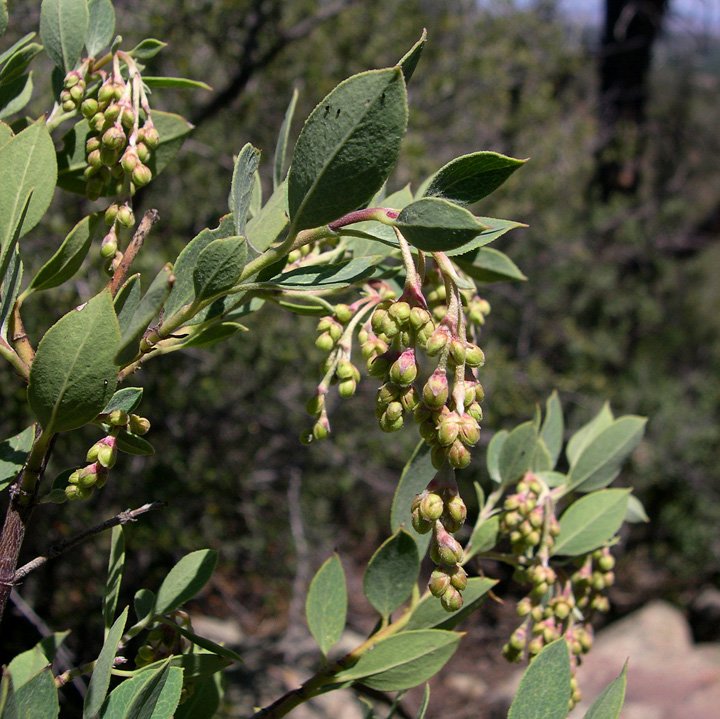The Genus Garrya
Silktassel
Family: Garryaceae
This is a genus of about 17 species native to Mexico, the western United States, Central America and the Greater Antilles.
These are evergreen dioecious wind-pollinated shrubs, our species usually reaching about 6-10’ but can reach double that height in prime locations. Leathery leaves that look a little bit like a manzanita or jojoba. Greenish catkin tassel-like flowers appear in spring through summer and turn into purple fruits.
Part sun in the low desert (full sun in higher elevations) moderate to low water, hardy to below 0°F.
Larval hosts for the Florestan sphinx moth (Manduca florestan). Great bird plant, for nesting and for fruits.
The leaves are made into tea taken for stomachache, colds, as a laxative, and for gonorrhea.
Found in desert scrub, chaparral, oak woodlands and pine-oak forests from 2,500-8,500 ft. in Arizona, California, Nevada, southwestern Utah, New Mexico, southern Texas; south into central Mexico.
You would be forgiven if you thought wright's silktassel (Garrya wrightii) was a very robust jojoba (Simmondsia chinensis). Photo by jackcurrry, iNaturalist
The fruits of Garrya wrightii go from green to reddish to purple. They aren't edible for people but birds and mammals love the fruits. Bears in particular love the fruit. Photo by timheaton on iNaturalist
Male and female flowers on separate plants (dioecious); male and female flowers small, lacking petals, arranged in pendant catkins. Photo by Sue Carnahan, SEINET
The pendulous, densely silky catkins of Garrya flavescens, photo by Max Licher, SEINET
Ashy silktassel (Garrya flavescens) is distinguished by the leaves being densely pubescent below, entire margins, and pubescent fruits. Photo by Max Licher, SEINET






